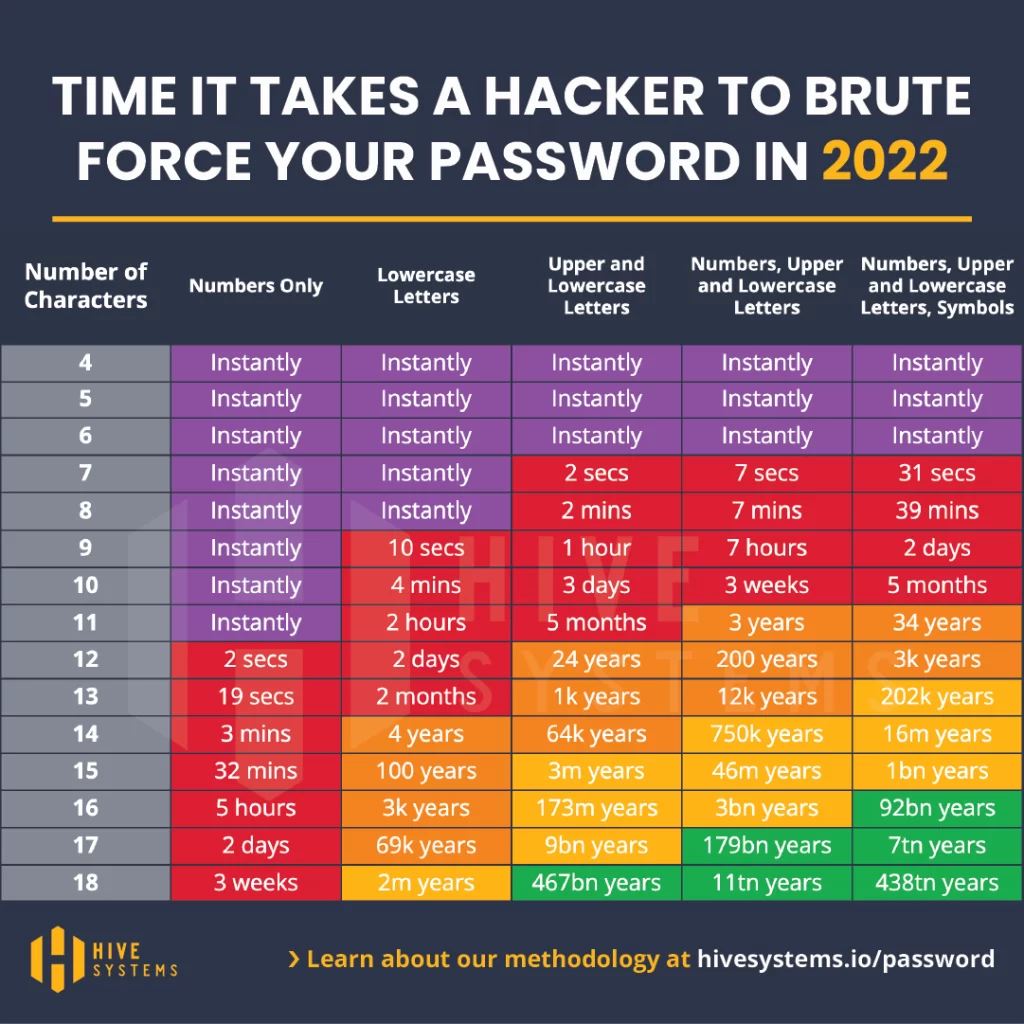Passwords – can’t live without them, can’t remember them. But you can make cybersecurity easy, or at least easier.
The video below is a great routine by British comedian Michael McIntyre on passwords from his Netflex stand-up special.
You should check it out but I’ll sum it up non-funnily for those who can’t turn on the sound at the moment – people want their passwords to be easy. And when they are forced to complicate them, they will almost invariably do the absolute bare minimum. It’s a lot more entertaining his way but the upshot is people want to make cybersecurity easy.
While relatable, that is a major problem. There are a lot of ways that hackers can get access to your accounts.
Here are a few sobering password facts originally from keepsecurity.com:
1) These five user passwords accounted for 3.2 million of the 130 million accounts that were stolen in the Adobe hack of 2013: “123456,” “12345678,” “Password,” “Adobe123” and “12345678.
2) An analysis of 11 million stolen passwords for cloud services conducted by Skyhigh Networks found that just 20 passwords constitute 10.3% of all passwords in use.
3) The minimum password length experts now recommend to avoid being compromised by brute-force cracking is 13
…
12) The top 10 most-used password list has barely changed in the last five years.
How long is your password? And when is the last time you changed it?
So we all know that having easy passwords is dangerous to our security. But so few of us take the advice to use more complex passwords to heart. There appears to be a misconception that it can’t happen to everyday people or that cyber hacks are targeted at big business.
Unfortunately, that’s just not true. 43% of cyber attacks are targeted at small businesses. 47 percent of Americans experienced financial identity theft in 2020.
However, there’s good news.
Today there are many ways to make cybersecurity easy and keep your accounts more secure.
Password Guidelines
Above you can see a chart of password combinations and how long it takes to break with each level of complexity,
As you can see many common passwords can be “brute force” hacked in a manner of minutes. Side note, brute force hacking is the process of trying passwords until one works.
But this tells you something else. We have specific guidelines in place that teach us exactly how to create a good password.
In addition, there is some great advice out there on how to remember passwords.
Pro tip I read recently – Come up with a phrase and use the first letter of each word in it to create a password of random letters. Then just add in a number and symbol or two and a random capitalization.
2 Ways to Make Cybersecurity Easy
Password Managers
I’ve seen people come up with a number of solutions for remembering their multiple passwords.
The worst one is to use the same password or to slightly change it across accounts.
Slightly better is to save your passwords somewhere. Common places include a word document on your computer (not good) or a small booklet (somewhat better).
But today there is a much better tool for keeping your multiple passwords complex, diverse and secure – a digital password manager.
A digital password stores your passwords to all assigned and can be accessed by the user through the use of a single password or a biometric (more on that later).
Through the use of password manager you can make all your passwords random and complex and only have to remember the single password necessary to access it.
Password managers can be native to a device or cloud based. Both can work but the problem with a device-based manager is that if you lose the device, you also lose access to all of your accounts.
Passwords vs Biometrics
Finally, we’ve entered into an age where you can completely bypass passwords entirely through the use of biometrics.
In the context of cyber-security, biometrics refers to the use of biologically specific individual information to secure and gain access to that individual’s specific cyber assets and resources.
To put it plainly, biometrics use features unique to you like your face, eyes, fingerprint or finger dimensions to lock and unlock your accounts.
When it comes to biometrics there are pros and cons.
The main benefit of biometrics is that they are more difficult to hack than a password.
The main disadvantage comes from legal privacy advocates. In theory, you can be compelled to give access to your accounts with your face or fingerprints but because of the 5th amendment, you can not be compelled to surrender your passwords.
Whether you choose biometrics or a password to secure your account is a matter of preference. However, the most secure way to protect your account is to use both!
So with keeping your cyber assets secure so easy today, why not use every resource available?

